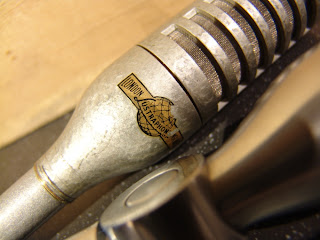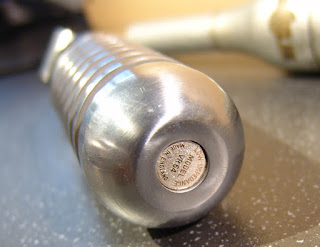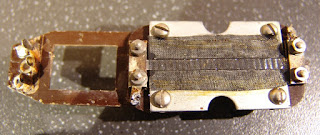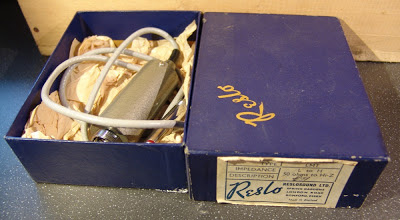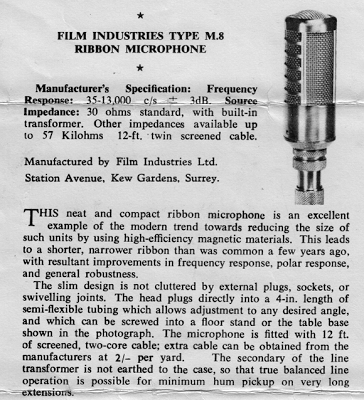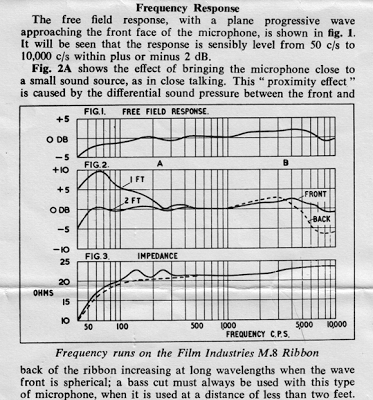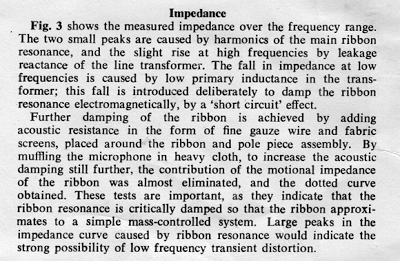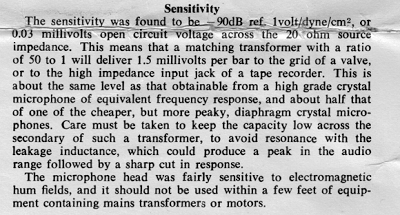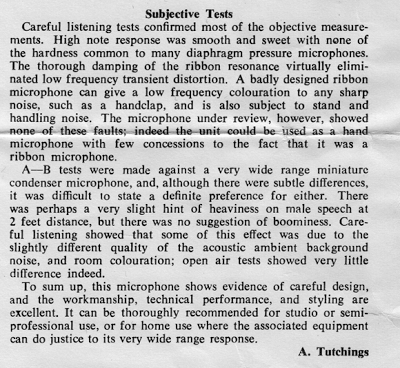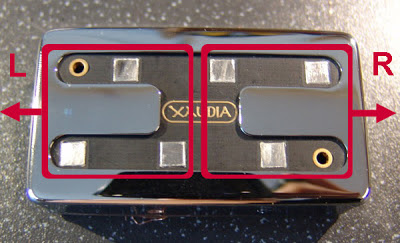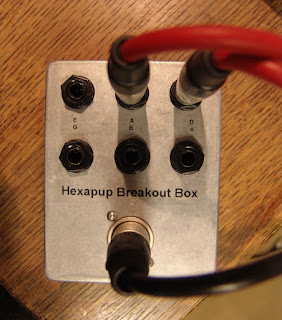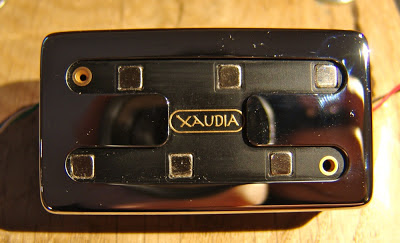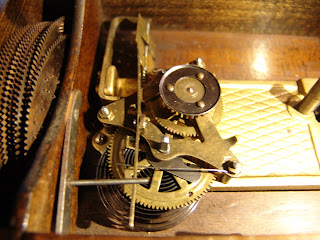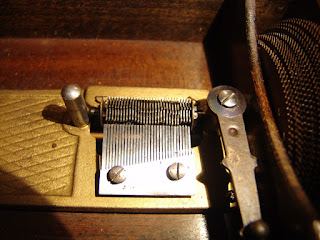Lustraphone was a British manufacturer of audio and hi-fi equipment based on Regent’s Park Road in North West London. They traded from 1942 until sometime in the 1970s, when the company was dissolved. This month’s MOTM is the Lustraphone VR64 pencil ribbon mic, known s the ‘ribbonette’ because of its small size. It was the successor to the VR53. They were also sold under the EAP / Elizabethan brand.
The VR64 is an attractive looking small ribbon mic, with a slightly wider grill at the front than the rear. Like its competition from Reslo and Film Industries, the magnets are positioned to the rear of the ribbon making it an imperfect figure-8 pattern. It was produced in several colours – I have see brushed chrome, blue paint, and grey hammertone examples.
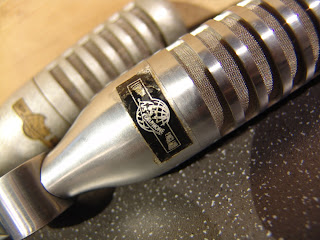 |
| Add caption |
I always thought that Lustraphone had one of the coolest logos, a bit reminiscent of The Man From UNCLE TV series. Different models have different styles of badges, either applied as a decal or a sticker.
When working properly, the VR64 sounds rather good, with a higher output and better top end response that the VR53. Like most of the British ribbons of the time, the Lustraphone mics were available with different impedances. The mics come badged with either ‘High’ or ‘Low’ impedance, but that doesn’t always tell the whole story. Two examples pictured here were both marked low impedance. However, one measured 15 ohms and the other 600 ohms, so it is important to know what you have.
The output transformers have a slight quirkiness, in that the bobbin is pushed halfway through the frame of the mic before the laminations are added, which neatly solves the problem of mounting the tranny.
 |
| Lustraphone VR64 inside |
 |
| Lustraphone VR64 motor – rear view showing magnets |
I’m not sure if having a layer of insulator between the laminations has any sonic effect, beyond the fact that the transformer has one fewer layer of laminations in the stack, and so a lower inductance and higher cutoff frequency. Probably little or none.
The 15 ohm transformer is made up from 15 turns of 0.85 mm wire for the primary, and about 145 turns of 0.3 mm for the secondary, giving a ratio just under 1:10. This one was re-wound for 300 ohms using the original lams, which gives a better output level into a modern preamp, whilst retaining the vintage character.
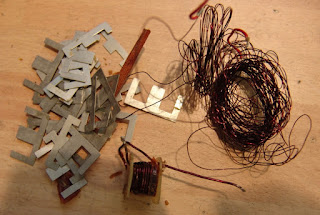 |
| Lustraphone transformer autopsy |
This example had a quick release mounting system. A bullet shaped part screws onto the mic stand, and then the mic is pushed onto it. Very cunning!
 |
| Lustraphone quick release mic mount |
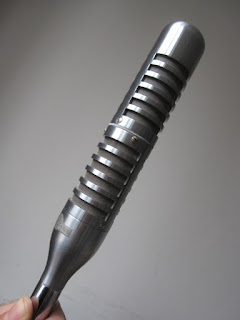 |
| Lustraphone VR65 stereo ribbon mic |
Lustraphone filed a patent for a stereo ribbon mic with a complicated switching system, to reverse phase and reduce noise, although the only examples I have seen have had seperate outputs for each ribbon, and no switches.
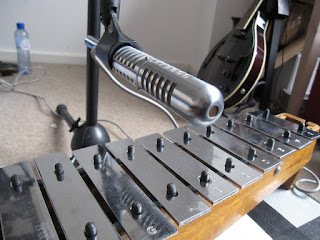 |
| Lustraphone VR65 in action |

